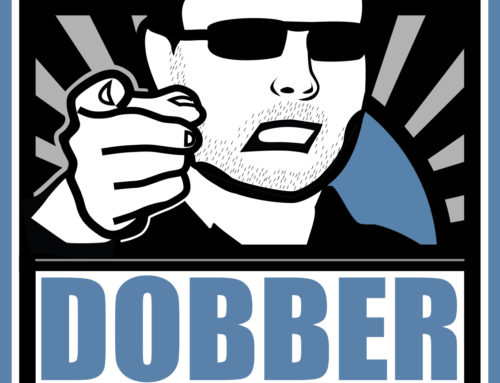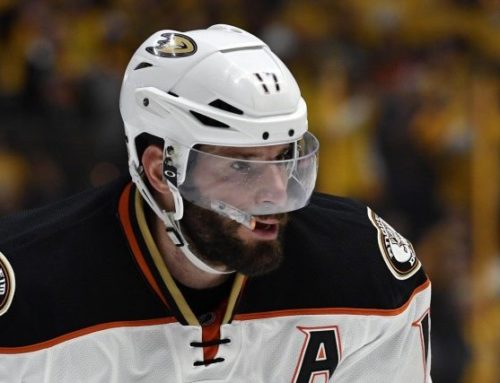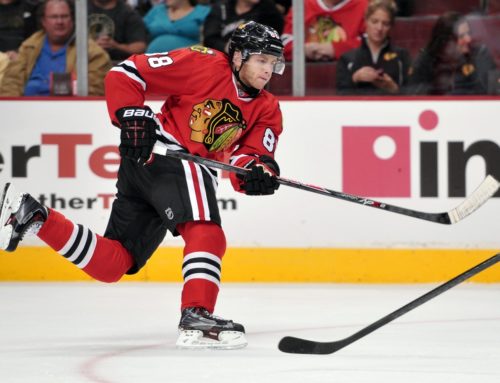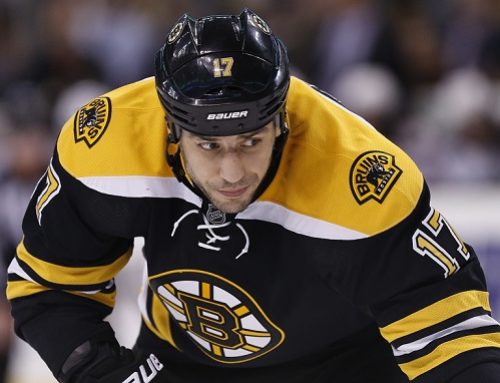The Business of Fantasy Hockey Part I – Value Investing
Jeff Angus
2010-07-21

I'd like to formally welcome Mike Colligan (my co-author for this article series) to DobberHockey. You can read more about Mike at the bottom of the page. For the past month we have been trading e-mails back and forth about fantasy hockey strategies for trading and player valuation, and how these strategies directly relate to many key concepts in the business world. We both possess business backgrounds from an education standpoint, and I was interested to see that Mike was using many of the same ideas and strategies from and applying them to fantasy hockey as I was. Today we will introduce the topic of value investing to you.
When we say fantasy hockey is business, we don’t mean you can make a living off your championship prize money (unless you are playing in a few high-roller leagues). What we mean is that many of the same principles that define and drive today’s business world are the same principles that govern your fantasy hockey league – you just may not realize it. If you can understand where these ideas come into play and how they impact not only your team but also the competition, you’ll be able to use it to your advantage for years to come (assuming your entire league isn't reading this article).
If you’re looking for some light summer reading, this probably isn’t it. We’ll try to define and explain the topics and theory in enough detail to not overwhelm the novice, or bore the stock market guru. Comments, feedback, and thoughts are encouraged more than ever as we all can learn from each other's fantasy hockey experiences.
Today's Topic: Value Investing
Wikipedia defines value investing as "the buying of securities whose shares appear underpriced by some form of fundamental analysis. In fantasy hockey terms, that sentence can be worded as "the trading for or drafting of players whose value appears undervalued by some form of fundamental analysis or research."
Prior to a fantasy hockey draft, most of us take the time to review the players available and develop a strategy that we feel gives us the best chance to win. Are you the type that likes to draft the high-risk goalies, knowing that if you fail see immediate results you won’t hesitate to hit the waiver wire for a replacement? Or do you focus on the safe, veteran players like Detroit's Brian Rafalski, who is a pretty safe bet to put up 10 goals and 40 assists each year?
Different investors often approach the stock market in the same way. There are a number of strategies that can influence which companies you buy stock in and when you buy it. Some day-traders are extremely active, always looking for the ‘stock du jour’. In fantasy hockey, these are the poolies who overpay for the quick starters, like Filip Kuba and Matt Carle.
Value investing is a more patient and calculated approach. Poolies who can’t keep their emotions in check may have trouble applying the theory. The Fathers of Value Investing are Benjamin Graham and David Dodd, former Columbia Business School Professors. The two most famous books on the subject are Security Analysis and The Intelligent Investor if you decide to read more into the subject.
To further the earlier definition of the term, Investopedia defines value investing as "the strategy of selecting stocks that trade for less than their intrinsic values. Value investors actively seek stocks of companies that they believe the market has undervalued. They believe the market overreacts to good and bad news, resulting in stock price movements that do not correspond with the company’s long-term fundamentals. The result is an opportunity for value investors to profit by buying when the price is deflated.
To continue with the definitions, intrinsic value is defined as "the actual value of a company or an asset based on an underlying perception of its true value including all aspects of the business, in terms of both tangible and intangible factors. This value may or may not be the same as the current market value."
There’s a lot packed into those few lines, but here are a couple important takeaways which we’ll start to look at in the sense of fantasy hockey.
1. Since most poolies are searching for players trading for less than their intrinsic values, it becomes very important that they are valuing players correctly in the first place. If we begin to overvalue a hometown player or a personal favorite, we often get tricked into thinking we're acquiring him at a discount when we may really be paying fair price or overpaying.
One example is Kris Versteeg. Pretend you live in Chicago or are a huge fan of the Blackhawks, and assume that after recording 53 points in 2008-09, Versteeg is easily a 65 point player in 2009-10. You get the chance to acquire him at the price of a 50 point player and feel you are ‘selecting a player that’s trading for less than his intrinsic value’, just as the definition instructs you to do. Unfortunately, your valuation is flawed and you failed to take into account the arrival of Marian Hossa and the impact it would have on Versteeg’s playing time, linemates, and opportunity. Instead of underpaying for Versteeg, you’re actually overpaying. Versteeg ended up regressing to 44 points in 2009-10.
(In Part II of our ‘Business of Fantasy Hockey’ series (coming next week), we’ll look at how to correctly determine a player’s true intrinsic value.)
2. You manage and operate your team under the belief that the market (other owners) overreact to good and bad news, resulting in value movements that do not correspond to how the player will perform in the long run. This is the classic idea of ‘buy-low’ or ‘sell-high’ that you hear tossed around a lot in fantasy hockey circles. I have used my World Junior Championship inflation scheme in the past many times, and I know others have had successes with it as well. Prospects that perform well over the course of the two-week tournament often experience an artificial value inflation that does not directly reflect their upside or abilities over the course of a season or career.
With regards to buying low, the assumption is that at some point (later that season or in future seasons depending on your time horizon), a player will eventually snap out of his funk and return to his proper level of production. You should constantly be doing an inventory of players on other teams searching for ones that aren’t living up to their intrinsic value, as well as players on your own team who are exceeding their values and may be good sell-high candidates.
After piling up 10 wins in October, Craig Anderson was being pegged as a lock for the Vezina. If you had tried to trade for him at this point, the asking price was likely through the roof, if he was even available at all. But if you had stuck to your valuation and analysis of long-term fundamentals, you’d remember that Anderson’s most active season only featured 27 starts. Despite his superhuman efforts, he wasn’t going to be able to handle the rigors of a full-time starting job and continue his incredible level of play past the first few weeks of the season. He finished the season as one of the better fantasy goalies in the league, but his level of play dropped a bit as the season progressed (Anderson won only 12 games combined in the final four months of the season).
(In Part III of our series, we’ll dive into the psychology of crowds (the majority) and how to not only separate your team from the ‘madness of the markets’, but also take advantage of the opportunities it creates.)
Mike Colligan is an NHL analyst, as well as the Pittsburgh Penguins correspondent at The Hockey Writers. He graduated with a degree in Business Administration and in his free time pursues interests in stocks, investing, hockey, and now the intersection of all three. You can check out more of his work at here or follow him on Twitter.





 EDM
EDM FLA
FLA MIN
MIN BUF
BUF CAR
CAR DET
DET TOR
TOR ANA
ANA
